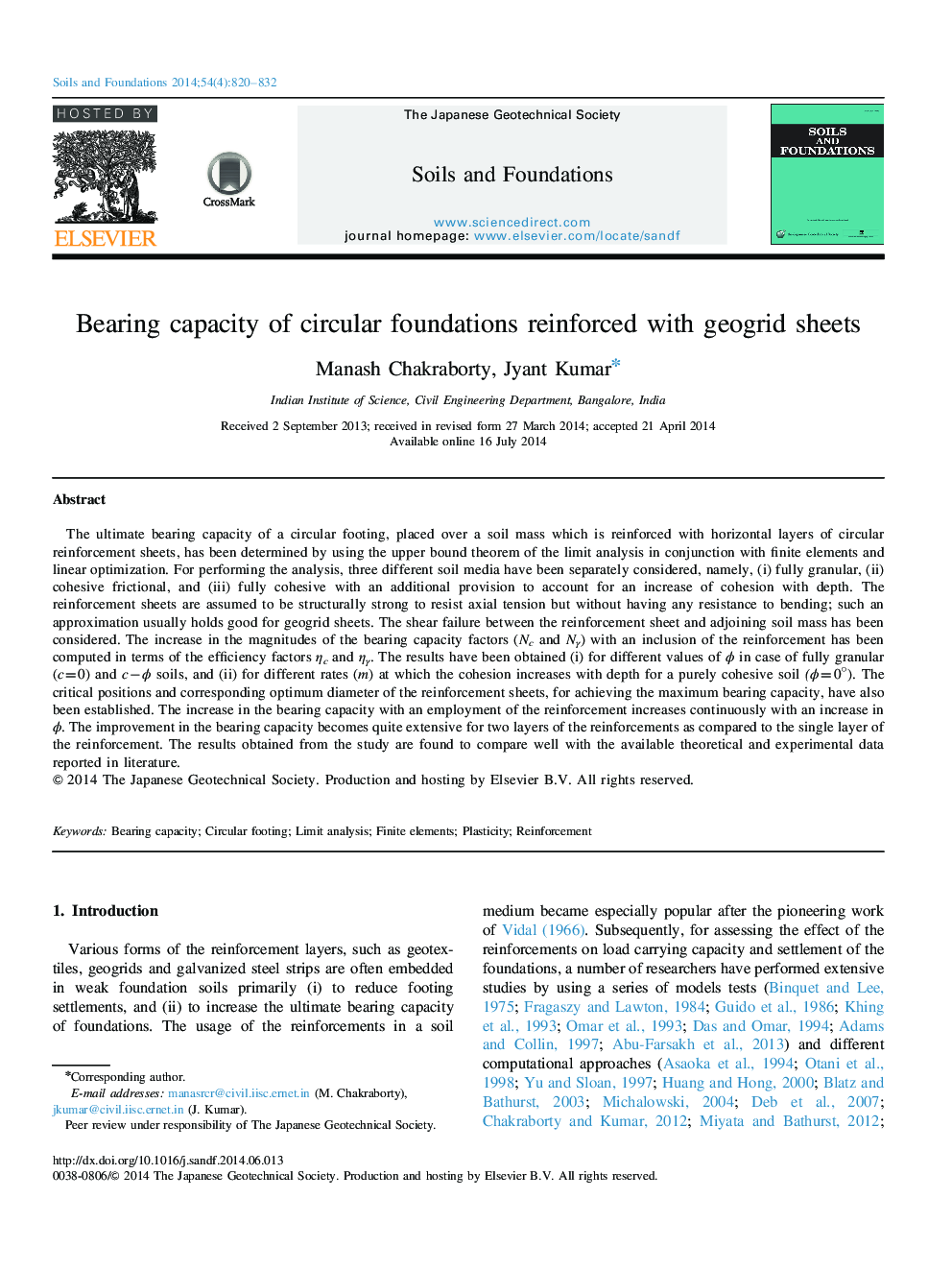| Article ID | Journal | Published Year | Pages | File Type |
|---|---|---|---|---|
| 307256 | Soils and Foundations | 2014 | 13 Pages |
The ultimate bearing capacity of a circular footing, placed over a soil mass which is reinforced with horizontal layers of circular reinforcement sheets, has been determined by using the upper bound theorem of the limit analysis in conjunction with finite elements and linear optimization. For performing the analysis, three different soil media have been separately considered, namely, (i) fully granular, (ii) cohesive frictional, and (iii) fully cohesive with an additional provision to account for an increase of cohesion with depth. The reinforcement sheets are assumed to be structurally strong to resist axial tension but without having any resistance to bending; such an approximation usually holds good for geogrid sheets. The shear failure between the reinforcement sheet and adjoining soil mass has been considered. The increase in the magnitudes of the bearing capacity factors (Nc and Nγ) with an inclusion of the reinforcement has been computed in terms of the efficiency factors ηc and ηγ. The results have been obtained (i) for different values of ϕ in case of fully granular (c=0) and c−ϕ soils, and (ii) for different rates (m) at which the cohesion increases with depth for a purely cohesive soil (ϕ=0○). The critical positions and corresponding optimum diameter of the reinforcement sheets, for achieving the maximum bearing capacity, have also been established. The increase in the bearing capacity with an employment of the reinforcement increases continuously with an increase in ϕ. The improvement in the bearing capacity becomes quite extensive for two layers of the reinforcements as compared to the single layer of the reinforcement. The results obtained from the study are found to compare well with the available theoretical and experimental data reported in literature.
